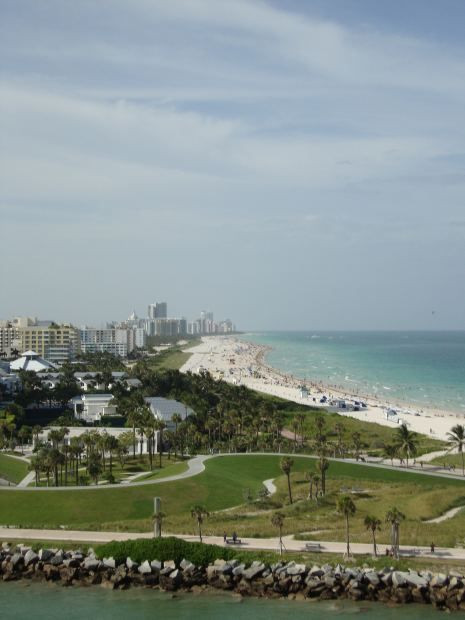
The city of Miami may soon be joining Atlantis in the category of cities that have drowned underwater, as scientists predict that the city will be underwater by the end of the century courtesy of climate change. And it's not just Miami: New York City, Boston and London are other potential victims of climate change.
Or at least, that's what Jeff Goodell has to say in his Rolling Stone piece, "Goodbye, Miami: By century's end, rising sea levels will turn the nation's urban fantasyland into an American Atlantis. But long before the city is completely underwater, chaos will begin." Goodwell reveals that there are multiple reasons why Miami (and other cities) are in threat, including: a rise in sea level and more severe storms.
"Sea-level rise is not a hypothetical disaster. It is a physical fact of life on a warming planet, the basic dynamics of which even a child can understand: Heat melts ice," writes Campbell. "Since the 1920s, the global average sea level has risen about nine inches, mostly from the thermal expansion of the ocean water. But thanks to our 200-year-long fossil-fuel binge, the great ice sheets in Greenland and Antarctica are starting to melt rapidly now, causing the rate of sea-level rise to grow exponentially."
Unfortunately, Miami has a few factors going against it in addition to the climate change.
"South Florida has two big problems," writes Goodell. "The first is its remarkably flat topography. Half the area that surrounds Miami is less than five feet above sea level. Its highest natural elevation, a limestone ridge that runs from Palm Beach to just south of the city, averages a scant 12 feet. With just three feet of sea-level rise, more than a third of southern Florida will vanish; at six feet, more than half will be gone; if the seas rise 12 feet, South Florida will be little more than an isolated archipelago surrounded by abandoned buildings and crumbling overpasses. And the waters won't just come in from the east - because the region is so flat, rising seas will come in nearly as fast from the west too, through the Everglades."
Goodwell notes that the latest research "suggests that sea level could rise more than six feet by the end of the century" and that "Wanless believes that it could continue rising a foot each decade after that." He adds that South Florida sits on a porous limestone plateau that could be detrimental as well.
"Imagine Swiss cheese, and you'll have a pretty good idea what the rock under southern Florida looks like," says Glenn Landers, a senior engineer at the U.S. Army Corps of Engineers.
© 2025 Latin Times. All rights reserved. Do not reproduce without permission.





